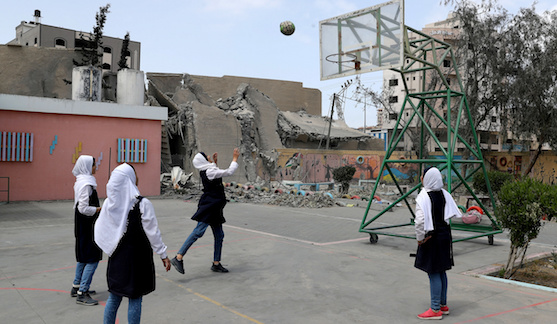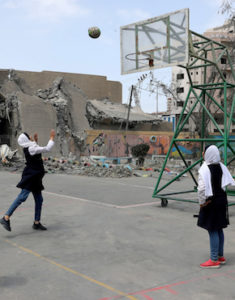
30.09.19
Framing harms: Analysing responses in international commitments addressing armed violence
By Elizabeth Minor
Cluster munitions Protecting civilians Protecting education from attack Toxic remnants of war

Reducing and responding to the harms caused by violence – and making progress towards conditions internationally where civilian protection is prioritised and resorting to violence is minimised – is a diffuse and complex global task. It implicates many different actors, fields of action and expertise, forums and processes. Within this broad picture, agreements and statements of commitment between states that address armed violence, weapons policy and civilian protection in armed conflict – ranging from resolutions, through political declarations, to new treaties – are part of the range of normative and practical steps that can be taken to make progress.
This new paper examines how problems of harm resulting from violence have been framed and responded to in different international agreements and statements of commitment by states, to consider implications for future policy processes. It examines how some different harms of armed violence resulting from them have been described, framed and acknowledged by states – and what action countries have been willing to commit to so far on the basis of these framings of harm.
The issue areas examined are: the use of cluster munitions; attacks on and the military use of educational facilities; the intersection of armed violence and development; and conflict pollution (which sits within a broader issue area of conflict and the environment). Though these are a wide-ranging set of issues, they are linked not only in their goals of mitigating and ultimately reducing armed violence, but also through some of the individuals, organisations and countries that have worked within the same broad policy community to advance work on all these areas.
The purpose of this analysis is to consider what the policy implications might be for future initiatives to seek an international response to problems in the area of weapons policy and civilian protection. Effectively addressing the range of issues in this area will require countries not only to adopt commitments that respond to the most immediate issues of deaths and injuries, and the most proximate causes of these in situations of armed violence and conflict. It will require responsiveness to harms that stretch over the longer term, with more complex chains of causality, and that might be more broadly conceived as harms to our societies collectively, and their futures. The international policy and advocacy community will need to find effective ways to do this.
In considering these issues, the paper examines the potential tension between the need to identify discrete, conceptually manageable and actionable problems – on which agreements and commitments can be made in order to make progress politically and practically – and the risk of oversimplifying, neglecting or erasing important aspects of complex issues. In this context, the paper also looks briefly at what risks as well as advantages there might be in dividing up responses under a broad civilian protection agenda to those that address only certain groups or situations. It also briefly looks at the applicability of more widely conceived precautionary approaches to structuring conversations and building international standards to deal with harms from armed violence.
Download this paper
 Analysing responses to different harms in international commitments to address armed violence
Analysing responses to different harms in international commitments to address armed violence
Discussion paper
September 2019